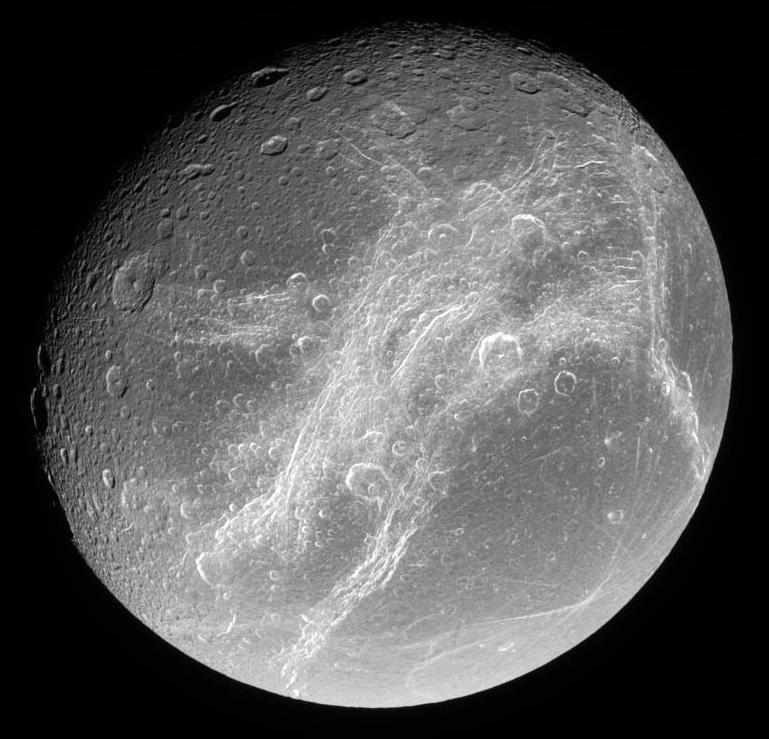There is a big crater that is called Amata, its diameter is of about 250 km; it is located at
the point convergence of the several shiny fractures and so is deformed and so is hardly detectable
The shiny fractures are proof of a recent geological activity, but since they are not around Amata,
it is possible that this impact made the surface more fragile so that the tectonic movements could have happened.
There also has been a theory saying that this crater of impact is actually an illusion caused by the entanglement of the faults that would
have an almost circular shape. But the presence of fields with only a few craters at the antipodes favours the
theory about real impacts. Indeed the major impacts have consequences on the aspect of the surface of the affected body (view
Tethys
and the odyssey crater for example).
| Distance to Saturn | 377 400 km |
| Period of revolution | 2.74 terrestrial days |
| Diameter | 1120 km |
| Mass (Terre=1) | 0.0001758 |
| Density (water =1) | 1.43 |
| Composition | 2/3 of ice and
1/3 of rock/silicates |
| Albedo | 0.60 |
| Temperature on the surface | -186 °C |
|
Other big craters are easier to see (image 2).
In short Dione has two very different faces:
- A cratered face in which the albedo is quite high.
The density of the craters is variable.
- A face in average darker but with shiny faults that go across it.
|
If we look at the surface on a smaller scale, for example on
image 3a,
we can observe the superposition of different generations of fault lines.
On
image 3b,
in addition to its shiny fractures, the surface
is noticeably striped by very thin parallel lines (their direction is shown in red),
a bit like if the surface had been 'raked'.
They could be the consequence of an impact or the one of a
geologically active history for Dione. In a certain way they remind us of the
parallel line that we find at the surface of Phobo's, Mars' biggest satellite.
Intern structure and composition :
Dione is Saturn's most dense satellite (apart from Titan). This density suggests an internal
structure giving of a central of rock representing a third of
the total mass. The rest of the mass is mainly composed of icy water.
It is also easier to justify an internal activity if we consider that the structure
is differentiated, since the heat needed for this activity can then be supplied
by the radioactive disintegration inside the rocky core. In Dione's case, taking
its orbital resonance with Enceladus into account, the internal heat is also supplied by
tidal dissipation.
Figures 1 to 4(credit: JPL/NASA)
2) Cratered surface and non-shiny fractures
3) Phobos', Mars' satellite, and its parallel strips
4a) resolution of 230 m/pixel 4b) resolution of 23 m/pixel
